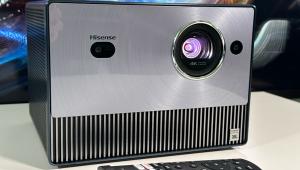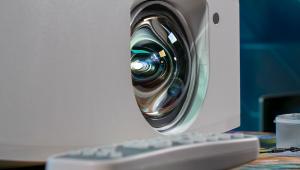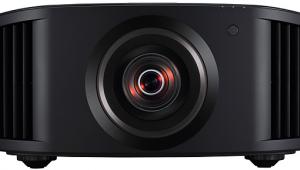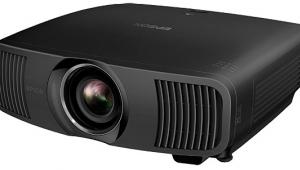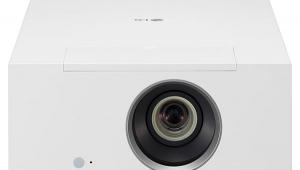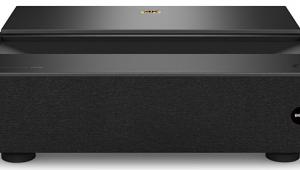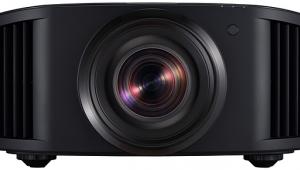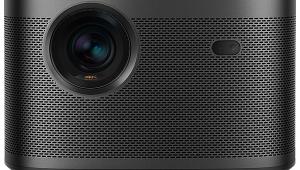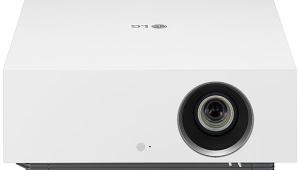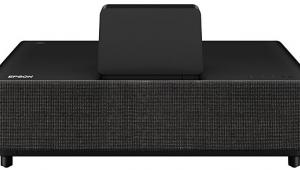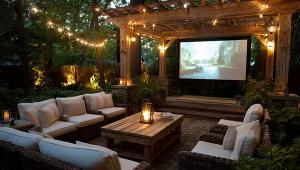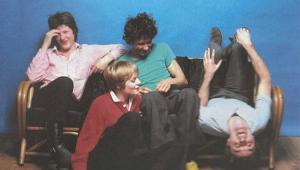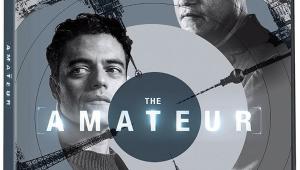Sony VPL-VW285ES LCOS Projector Review Page 2
UHD/HDR
For HDR, the gamma curve (or EOTF for Electro Optical Transfer Function) is called the perceptual quantization curve, or PQ. While it’s different in shape than classic gamma curves, both indicate how the output luminance of a video dis-
play relates to the input. When I checked the Sony’s PQ curve during the calibration, I found that even in the High lamp mode, with the Contrast Enhancer on High and the HDR Contrast control near maximum, measuring the PQ gamma curve off the screen with CalMAN 2017 showed an
HDR output that was dimmer than optimum. This might be taken with some grains of salt. Sony’s position, as I understand it, is that the PQ curve for a projector, while not irrelevant, is difficult to measure accurately in a way that relates to how you subjectively experience real-world images on the screen (which acts as a variable element in the total display “system”). The PQ curve was designed for flat-screen displays with peak luminance levels that are far higher than any projec-
tor can manage, and UHD program sources were designed to be watched on high luminance flat-screen sets.
It’s perhaps significant that three other HDR-capable projectors I’ve checked recently had default PQ curves that measured much like the Sony’s. But only one of them (a new late-model JVC) offered controls that could move it closer to the PQ shape we see on flat-screen sets.
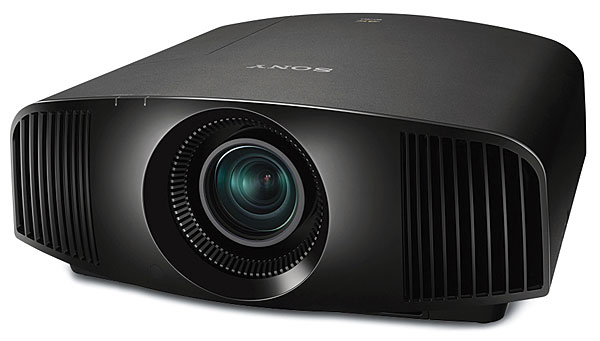
Nevertheless, on my traditional 1.3 gain matte white screen, both the SDR and HDR images the Sony produced were exceptional and certainly not dim by any reasonable projection standard.
Animation nearly always looks good on almost any display, but if you know what to look for, it can be revealing. I often fall back on Trolls for both resolution and color. In this film’s style, most surfaces (from clothes to sets) appear richly colored and have a slightly fuzzy, felt-like texture. And here, the Sony didn’t disappoint. All of the textures and stray strands of that felt-like look were clearly visible, and the colors were eye-popping, particularly in the vivid musical numbers.
Consistently bright animation doesn’t always contain the bright highlights that show off a display’s high dynamic range. But the live-action movie Lucy certainly does. The last 15 minutes or so is an almost psychedelic mixture of splashy color and light that vividly demonstrated the Sony’s HDR capabilities. It would be misleading to suggest that the projector will show this as dramatically as a premier flat-screen set, such as the latest OLEDs from Sony or LG. But try to convince your friends of that as they gather up their jaws from the floor after watching this movie on the VPL- VW285ES with a projection screen much larger than what an even remotely affordable Ultra HDTV can provide.
And so it went from UHD disc to UHD disc. Yes, there were a few UHD titles that played less well than others with this projector. When I rechecked Starship Troopers after finding it better than expected on another display, the Sony brought out its excessive noise (or perhaps exaggerated film grain) to the point where I couldn’t enjoy watching it (though Sony noted during our fact check that some tweaking of the noise filtering in the projector’s Reality Creation settings might have mitigated this). Arrival was simply too dark (as it also looks on other displays). And what was the transfer team thinking when they added gross-looking edge enhancement to the UHD release of Peter Jackson’s 2005 King Kong—enhancement that’s not present in the 1080p HD/SDR release. (Jackson’s is by far my favorite version of this story. Yeah, I know, the original is a classic, and blah, blah, blah—but while it’s astonishing for what it did in its era, it’s also severely limited by that era.)
However, most of the UHD discs I tried on the Sony looked amazing, including The Great Wall, Guardians of the Galaxy: Vol. 2, Blade Runner, Allied, The Boss Baby, Ender’s Game (particularly in the climactic battle, with its brightly lit “video game” action), and Life of Pi.
In most of my HDR viewing, I used the High setting for both the lamp and the Contrast Enhancer, which gener- ally worked extremely well. But on some scenes (though far from all), particularly of facial close-ups (images to which we’re all highly sensitive), the High setting was too much. It sometimes obscured facial detail and looked slightly glaring and unnatural. This was apparent in the final bookend scene in Life of Pi (in Pi’s Canada home). But I chose High most of the time, on most films; Middle often lacked the pop I expect from HDR. And bad-looking shots in High were outliers for me, rather than a frequent annoyance.
HD/SDR
After many hours spent watching 4K/HDR on the Sony, going back
to HD in standard dynamic range required some adaptation. Not because the projector was inadequate in SDR—quite the contrary—but because, even with the main limitation all projectors suffer from in HDR versus flat-screen sets (more limited peak output on bright highlights), it’s still a big step up from SDR.
I did alter a few of the HD/SDR settings from those I used in the Sony’s calibration—increasing the Contrast Enhancer from Low to Middle (a subtle but worthwhile change), changing the Contrast from 70 to 75-80, and alternating the Gamma between 2.2 for darker material and 2.4 for most. That darker material included The Finest Hours, an intense film about the rescue of crew members from a tanker split in two in a storm off the Massachusetts coast in 1952. The exterior night shots of the tanker on the dark ocean were difficult for the Sony, but the action was still clear. The interior shots were fine—dark, yes, but appropriately so, with the important details in the engine room still easy to see.
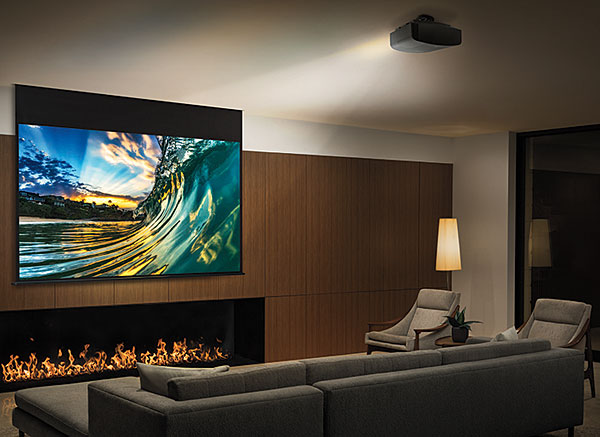
I’ve often used Harry Potter and the Deathly Hallows: Part 2 for checking rendition of dimly lit content because it’s an unremittingly challenging disc in its SDR version. (I haven’t yet viewed the HDR release.) I was surprised at how well the Sony performed here, given its lack of a dynamic iris and its respectable but not exceptional contrast ratio. Shadow detail was good, even in some horrendously difficult shots of Hogwarts at night. It all looked appropriately gloomy, but it was never hard to follow or washed out.
Both of the above movies use a subdued palette. To view a film more obviously vivid but still natural, I pulled out Seven Years in Tibet. If I’d written this report three years ago, I’d have raved about the film’s beautiful photography, crisp images, and striking color design. All are still true, but I’d love to see this film in HDR, however unlikely that may be. (Still, it is from Sony Pictures, so there’s hope!) Nonetheless, watching it in HD/SDR on this projector, I had no complaints, except to wonder how it might fare with UHD’s wider color gamut.
I viewed only a limited selection of 3D material, but the Sony did well with it. The 3D images on the three discs I sampled—Tangled, A Christmas Carol, and Avatar—were impressive. The brightness in the default 3D settings (including High lamp mode), while not generous, was adequate. And I saw no obvious ghosting.
Conclusions
More than any other improvement, I would have welcomed a dynamic iris on the VPL-VW285ES to deepen its black levels. Sony’s dynamic irises are the best in the business. The step-up VPL-VW385ES does give you this, along with a few other additions mentioned earlier.
Nevertheless, while no projector can match either the dynamic HDR pop or the black level of the best flat-screen TVs, the VPL-VW285ES offers compelling images on a big screen. At last, projector fans have the option of a genuine full native-4K model that won’t break the bank and might just leave you feeling like you scored a bargain.


